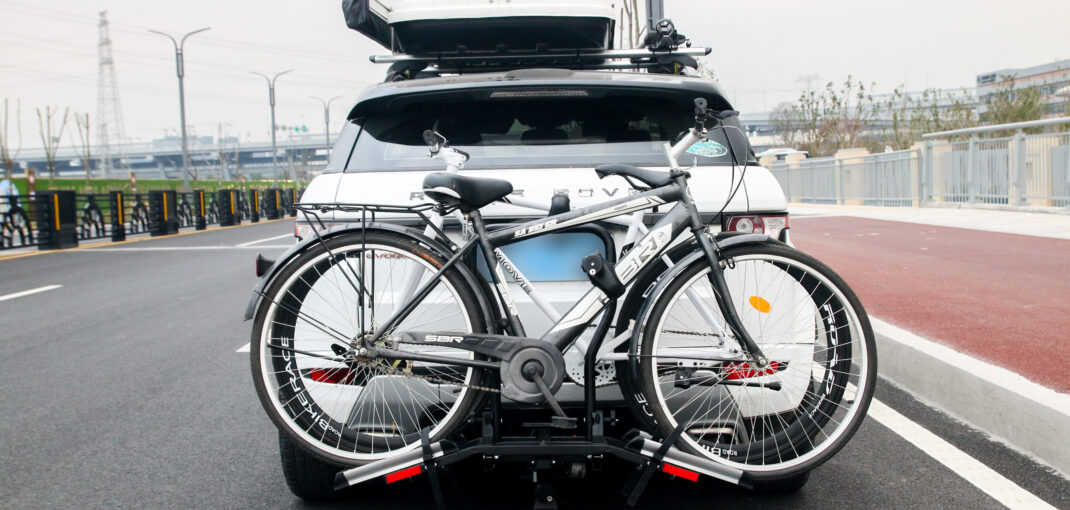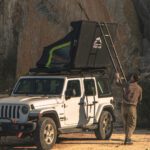Overlanding is exploring remote areas using a vehicle while being self-sufficient. This usually brings to mind images of rugged SUVs traversing breathtaking landscapes. However, have you ever thought about incorporating cycling into your overlanding journey? You can still enjoy the immersive experience and freedom of cycling while embracing the spirit of overlanding adventure. With the right gear and planning, creating a unique blend of exploration, convenience, and active adventure is possible.
In this article, you’ll learn about the equipment required to make this adventure successful.
Equipping Yourself for the Journey
To embark on this exciting adventure, you’ll need some key equipment that seamlessly integrates your cycling passion with your overlanding setup:
1. Bike Racks
When it comes to transporting your bike, choosing the right bike rack is crucial to ensure the safety and security of your precious two-wheeled companion. Before making a decision, consider several factors such as your vehicle type, the number of bikes you’ll be carrying, and the intended terrain.
- Hitch-mounted racks are a sturdy and popular solution for most vehicles with a tow hitch. They provide easy access to your bikes and keep them out of the elements. This type of rack can accommodate multiple bikes and can be easily installed and removed.
- Roof-mounted racks are ideal for SUVs and vans, but it’s important to be mindful of the added height and potential wind resistance, especially on longer journeys or off-road adventures. However, roof-mounted racks are great for carrying multiple bikes at once and do not obstruct the rearview mirror.
- Spare tire racks are convenient for SUVs with rear-mounted spare tires. They can be easily installed and removed, but they may limit access to the cargo area and might not be suitable for all bike types.
- Truck bed mounts are perfect for trucks, offering a secure and easily accessible option for loading and unloading bikes. This type of rack can accommodate multiple bikes and can be easily removed when not in use. It’s important to make sure the bikes are properly secured to prevent damage to the bikes or the truck.
2. Lightweight Trailers
Carrying extra gear, supplies, or even another bike can be a daunting task when going on a cycling trip. However, a lightweight trailer can make all the difference, providing you with the much-needed support to carry everything you need. When choosing a trailer, it is important to consider a few factors to ensure that you get one that is compatible with your bike and intended terrain.
Firstly, you need to consider its weight capacity. This is particularly crucial if you are carrying heavy items, such as camping gear or food supplies. You want to make sure that your trailer can comfortably handle the weight without putting too much strain on your bike.
Secondly, you need to look at the suspension system of the trailer. If you are planning to ride on rough terrains, such as dirt paths or rocky roads, you need a trailer that can handle the bumps and shocks. A good suspension system will ensure that your gear remains safe and secure and that you don’t feel every bump on the road.
Lastly, you need to consider how easy it is to attach and detach the trailer. A good trailer should be easy to attach and detach, allowing you to set up and break down camp more efficiently. This means that you should look for a trailer that comes with a quick-release system or one that can be easily detached with a latch or pin.
3. Portable Repair Kits
When embarking on any overlanding trip, it’s important to prioritize self-sufficiency and preparedness. If you plan to cycle, it’s even more crucial to have a comprehensive repair kit with you at all times. This kit should include essential tools such as wrenches, screwdrivers, and Allen keys, as well as spare tubes, a reliable pump, and tire levers to handle common breakdowns on the road.
In addition to these basics, you might also want to consider adding a chain breaker and a patch kit to your repair kit. A chain breaker can be a lifesaver if your bike chain breaks while you’re on the road, while a patch kit can help you make more extensive repairs to your tires. By having these tools with you, you’ll be able to get back on track quickly and minimize downtime.
Beyond the Essentials
While the core equipment mentioned above forms the foundation for your bike-overlanding setup, remember to consider these additional factors:
- Bike selection: Choose a versatile and reliable bike suitable for both on-road and off-road riding. Gravel bikes or touring bikes are popular choices for their durability, comfort, and ability to handle varied terrain. Consider factors like frame material, tire size and tread, and gearing options to match your riding style and anticipated terrain.
- Packing smart: Pack light for both your bike and vehicle, prioritizing essentials like clothing appropriate for diverse weather conditions, navigation tools, a comprehensive first-aid kit, and emergency supplies. Utilize panniers, handlebar bags, and frame-mounted bags on your bike to distribute weight efficiently and keep essentials readily accessible.
- Planning and safety: Research your route thoroughly, considering terrain difficulty, road conditions, and potential weather hazards. Be aware of local regulations and traffic laws, especially when cycling on public roads. Prioritize safety by wearing proper cycling gear like a helmet, reflective clothing, and appropriate footwear. Consider carrying emergency communication devices like a satellite messenger or personal locator beacon for added peace of mind in remote areas.
Conclusion
Combining cycling and overlanding is a unique and enriching adventure experience that blends the freedom of cycling with the self-sufficiency and exploration of overlanding. By integrating cycling into your overlanding journey, you can discover hidden gems, embrace an active lifestyle, and explore more areas. To start, make sure you have the right gear, including a suitable bike, bike rack, lightweight trailer, and portable repair kit. Choose your bike carefully, pack wisely, and prioritize safety during your adventures.For all your overlanding-cum-cycling needs, visit Kermode Overlanding. It is the ultimate destination for high-quality gear and expert advice. Whether you’re an experienced overlander or just starting, Kermode Overlanding has everything you need to create an unforgettable cycling and overlanding adventure.






